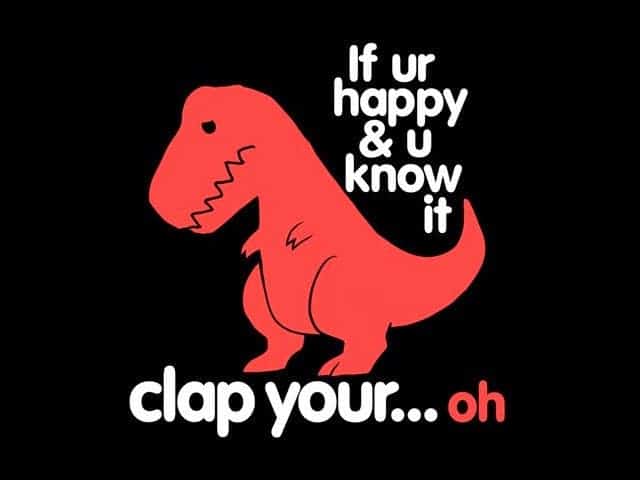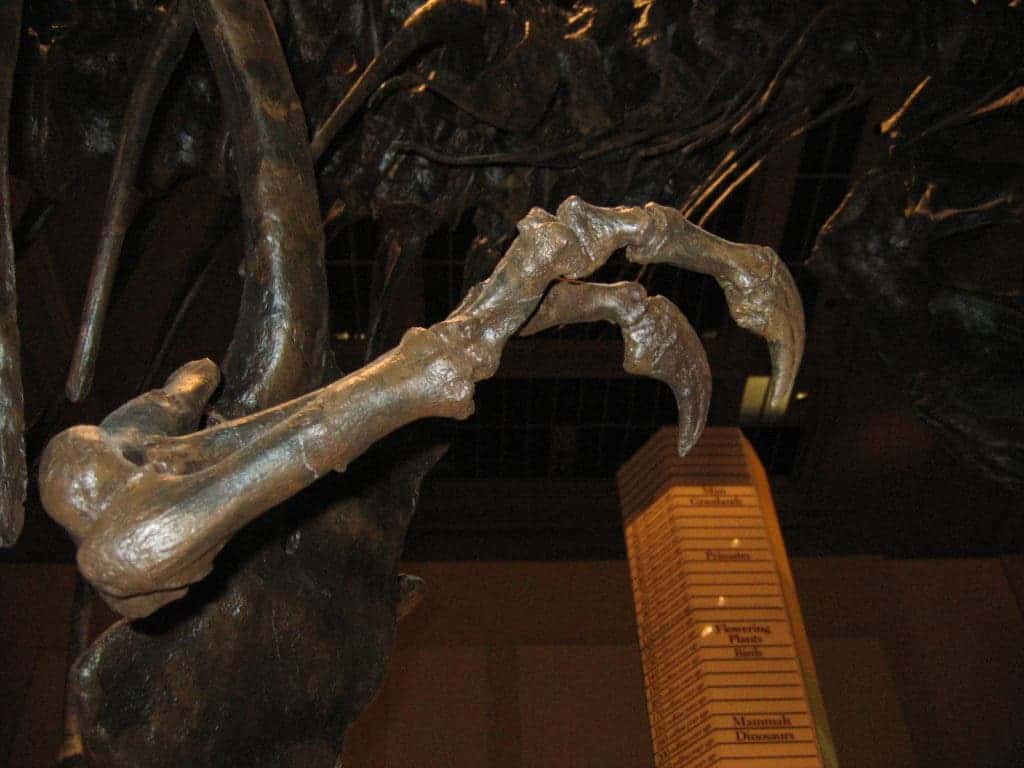Meeting the giant carnivorous dinosaur eye to eye must have been a gruesome sight during the Cretacious. Shifting the gaze a bit south from T. Rex’s menacing jaw, however, would have shown a pair of puny arms. This contradictory appearance has made the dinosaur a laughing stock, one big fossilized joke and a favorite running gag among nerds everywhere in the world.
Well, the joke’s on you, bud. Steven Stanley, a paleontologist at the University of Hawaii at Manoa, says T-Rex’s short forelimbs could have actually been an asset during close encounters with prey, allowing the dinosaurs to viciously slash anything in front of it.
For decades, paleontologists and biologists have debated how T. Rex used its arms. One leading hypothesis is that the dinosaur’s forelimbs were vestigial — a structure that served a purpose at some point far back in an animal’s family tree, but was gradually reduced in size and functionality as an adaptive response to millions of years of evolutionary pressure. Others have suggested that T. Rex used its arms to grab onto females when mating; lever itself off the ground if it happened to get knocked down by an opponent; or as a clutch to closely hold onto prey long enough for the dinosaur’s killer jaws to make the final blow.
Less ‘clumsy’, more ‘ferocious’
It’s important to note that while T. Rex’s forelimbs were indeed small in relation to the dinosaur’s huge body and jaws, they were still one meter (three feet) in length and may have been capable of bench-pressing over 180 kg (400 pounds) each. Stanley has identified several clues that suggest T. Rex mini-arms were actually secret weapons capable of inflicting ferocious damage.
For starters, the arms are strong and robust, as indicated by the bones that make up the limbs themselves but also the coracoid, which is the shoulder bone that helps control arm movement. Being so short in relation to the dinosaur’s towering body, the arms would have been perfectly adapted to slashing at close quarters. Another hint is that T. Rex had two claws on each forelimb instead of the typical three most other theropods feature. Having just two claws would have helped T. Rex exert 50 percent more pressure when slashing and clawing. The (8-10 cm long) sickle-shaped claws would have caused deep wounds.
“Its short, strong forelimbs and large claws would have permitted T. rex, whether mounted on a victim’s back or grasping it with its jaws, to inflict four gashes a meter or more long and several centimeters deep within a few seconds — and it could have repeated this multiple times in rapid succession.”
“Infliction of damage by slashing was widespread among other theropod taxa, so in light of its formidable weaponry, why should T. rex not have engaged in this activity?” Stanley wrote about his findings presented at the annual conference of the Geological Society of America.
The fossil record does indeed point to the fact that T. Rex’s arms shrank over time as its jaw became bigger and more powerful. But rather than becoming useless evolutionary remnants, the dinosaur’s forelimbs would have still packed a deadly punch in close-quarters combat.
For now, scientists aren’t entirely sure what the deal with T. Rex’s arms is. More biomechanical studies such as this might help shed light on the issue because the dinosaur’s dynamics aren’t yet fully understood. For instance, Thomas Holtz at the University of Maryland, who wasn’t involved with the research, said T. Rex had “to push its chest up against the side of the victim” in order to deploy its limbs for damage.
In any event, T. Rex’s arms don’t seem that silly anymore, that’s for sure.











